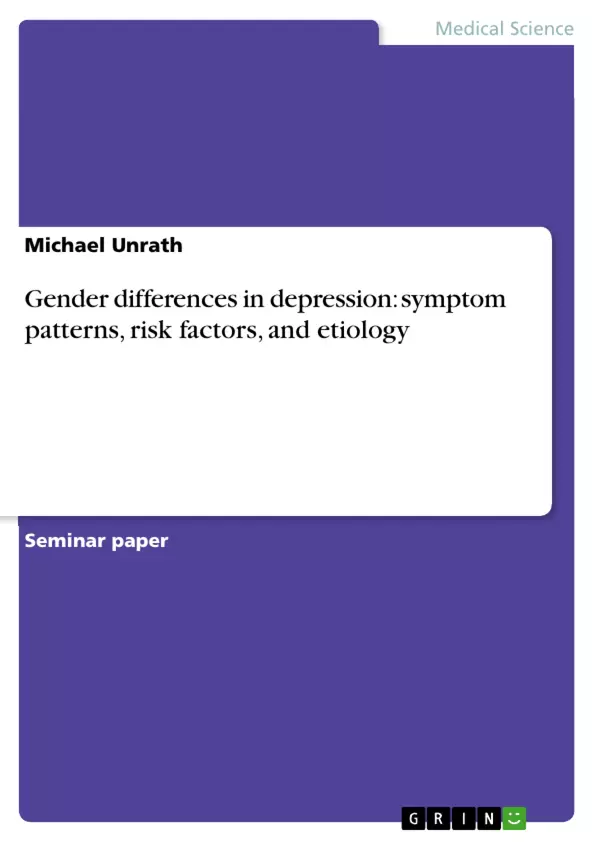Marked gender differences with respect to the prevalence and symptoms of depression have been observed for years. The aim of this selective review is to give a rather broad and comprehensive overview of the topic by looking at gender differences in depression from various angles, including symptom patterns and measurement, risk factors, course of disease, and etiology in both children and adults. Important findings of the last two years are described and discussed, including recommendations for further research and health care practice.
Inhaltsverzeichnis (Table of Contents)
- Abstract
- Introduction
- Methods
- Symptom patterns and measurement: children and adolescents
- Symptom patterns and measurement: adults
- Risk factors and course of disease: children and adolescents
- Risk factors and course of disease: adults
- Discussion and conclusions
- Literature
Zielsetzung und Themenschwerpunkte (Objectives and Key Themes)
The main aim of this review is to provide a comprehensive overview of gender differences in depression. It explores various aspects of the topic, including symptom patterns, risk factors, course of disease, and etiology in both children and adults. The review focuses on relevant international literature from the last two years, highlighting important findings and recommendations for future research and clinical practice.
- Gender differences in depression prevalence and symptom patterns
- Risk factors for depression in both children and adults
- The course of depression across the lifespan
- Etiological factors contributing to gender disparities in depression
- The role of diagnostic instruments in understanding gender differences
Zusammenfassung der Kapitel (Chapter Summaries)
- Abstract: This section provides a brief overview of the review's focus, exploring gender differences in depression across symptom patterns, risk factors, course of disease, and etiology in both children and adults.
- Introduction: This chapter introduces the prevalence and characteristics of depression as a global mental health concern. It highlights the well-documented gender disparity in depression rates and outlines the need to investigate its underlying causes, including potential differences in symptom presentation, help-seeking behavior, and genetic vulnerability.
- Methods: This chapter describes the methodology used to conduct the literature review, including the search terms, inclusion criteria, and the resulting selection of 28 articles. A table summarizing key features of these articles is provided.
- Symptom patterns and measurement: children and adolescents: This chapter explores the prevalence and symptom patterns of depression in children and adolescents. It analyzes research findings suggesting that while overall depression rates may be similar between boys and girls in childhood, they diverge during adolescence, with girls showing higher rates of depression. The chapter also highlights potential gender-specific symptom patterns observed in this age group.
- Symptom patterns and measurement: adults: This chapter examines gender differences in depression symptoms and prevalence rates among adults. It discusses research findings suggesting that while there are similarities in age of onset and response to treatment, women often experience a more severe and persistent form of depression, with a greater number and severity of symptoms.
Schlüsselwörter (Keywords)
The core focus of this review is on understanding the complex interplay of gender, depression, and related factors. Key terms and concepts include: gender differences, depression, symptom patterns, risk factors, course of disease, etiology, children, adolescents, adults, measurement, prevalence, diagnostic instruments, clinical practice, research recommendations.
- Arbeit zitieren
- Michael Unrath (Autor:in), 2009, Gender differences in depression: symptom patterns, risk factors, and etiology, München, GRIN Verlag, https://www.hausarbeiten.de/document/155028


